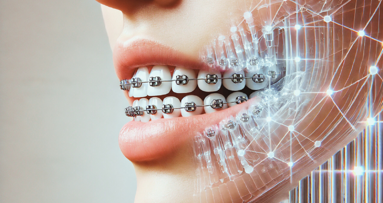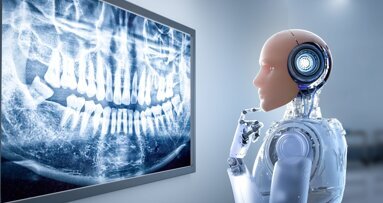The rise of artificial intelligence (AI) has sparked both curiosity and scepticism across numerous professions, including dentistry. For many, the term “artificial intelligence” evokes notions of complex programming, high costs and the potential replacement of human expertise. This article aims to demystify AI and show how it can be a user-friendly, cost-effective tool to complement rather than replace the skills of dental professionals. Understanding AI and exploring how it might be integrated into the dental practice is important because history shows that delaying the adoption of new technologies often makes it more difficult to catch up once they become essential.
Overcoming misconceptions about AI in dentistry
A common misconception is that using AI requires extensive technical knowledge or a background in programming. In reality, AI platforms are specifically designed to be user-friendly, catering to professionals with varying levels of technical expertise. Unlike early digital technologies, which often required significant training, modern AI tools are intuitive and feature built-in guidance systems. AI also supports multilingual capabilities, enabling seamless communication in numerous languages. In my opinion, the key to mastering AI lies in willingness rather than technological expertise; once you begin, the intuitive nature of the technology quickly draws you in.
Another common concern is that AI tools are prohibitively expensive. While it is true that some advanced AI systems are costly, there are also many free and affordable versions available. Just as we have grown accustomed to using search engines such as Google or Yahoo for free, AI tools often offer free tiers with significant functionality for everyday use. Paid versions typically provide advanced features, such as instant updates, enhanced capabilities and improved accuracy.
Consider how often inefficiencies cost us time or money simply because we lack the right tools. When used effectively, AI can transform professional tasks and everyday actions. It streamlines workflows, automates repetitive tasks and allows dental professionals to focus on patient care. As such, it is not merely an expense but an investment with a measurable return.
AI’s growing role in dentistry
Now that we have addressed some common concerns, let us explore how AI is actively transforming the dental field. The variety and accessibility of AI tools have expanded significantly in recent years. For instance, ChatGPT, an AI-based conversational tool, reached 100 million users within two months of its release—a milestone that demonstrates its accessibility and demand among users.1
The integration of AI into dental practices, research and manufacturing has propelled the field into a new era of precision and efficiency. AI-powered diagnostic tools have made significant advancements, enabling accurate radiographic analysis and early detection of caries and oral cancer. AI-guided treatment planning provides personalised, data-driven recommendations that enhance patient outcomes and optimise workflows.2,3 Digital prostheses, fabricated using AI-enhanced CAD/CAM systems, deliver high precision and significantly reduce the time needed for prosthesis fabrication.4
Beyond clinical applications, AI supports various roles within the dental profession. For nurses and receptionists, AI chatbots simplify administrative tasks such as appointment scheduling, automated reminders and patient triage.5 This automation allows staff to focus on providing a human touch in patient interactions, thereby improving patient satisfaction.6
“When used effectively, AI can transform professional tasks and everyday actions.”
Dental technicians benefit from AI’s ability to optimise the design and manufacturing of prostheses. AI-powered tools analyse patient-specific data to design and fabricate dental prostheses with exceptional accuracy, reducing the need for adjustments and ensuring an optimal fit on the first attempt. This advancement accelerates production and improves patient outcomes by minimising the need for repeated visits.7
Academics employ AI to enhance dental research through advanced predictive modelling and data analysis. AI accelerates research by processing vast data sets to uncover patterns, such as trends, and relationships, such as correlations, with remarkable speed and accuracy. For instance, AI models can analyse patient data, including radiographs and medical history, to identify factors influencing implant viability, thereby predicting dental implant success.7 Additionally, AI’s predictive modelling capabilities enable the simulation of outcomes and exploration of hypotheses that would otherwise require extensive laboratory work. This approach not only streamlines the research process but also enhances the precision of findings, contributing to improved patient care and treatment methodologies.9
The expansion of AI in dentistry is evident not only in research and publications but also in industrial adoption. Over the past decade, AI-related dental research has grown at an unprecedented rate, reaching an average annual increase of 21.6% and accelerating to 34.9% per year in the last five years.10 This surge reflects the profession’s commitment to integrating advanced technologies into practice, aligning with the global trend of embracing AI to enhance diagnostic accuracy, treatment planning and patient care.11
Clinics incorporating AI into their practices have reported significant improvements in diagnostic precision and efficiency. Additionally, robotic-assisted procedures enhance precision, reducing surgical errors and improving implant placement. These advancements streamline workflows and improve patient outcomes.12
Embracing AI: A path to innovation and enhanced patient care
AI is revolutionising dentistry by enhancing precision, efficiency and patient care across all roles. From AI-powered scheduling tools for receptionists to advanced diagnostic systems for dentists, the technology is streamlining workflows and improving outcomes. Despite initial concerns, AI is becoming more accessible through user-friendly and cost-effective solutions, making it easier for dental professionals to integrate AI technologies into daily practice.
Rather than replacing human expertise, AI serves as a powerful ally, allowing practitioners to focus on delivering high-quality care. By exploring AI solutions today—whether for diagnostics, workflow automation or patient care—dental professionals can future-proof their practice and stay ahead in an evolving industry.
Topics:
Tags:
As an orthodontist, I derive immense satisfaction from employing cutting-edge technologies that significantly improve treatment efficiency and patient ...
HONG KONG, China: Hong Kong has only 3.7 dentists per 10,000 residents, and its dental healthcare system is under pressure owing to an ageing population. ...
KUOPIO, Finland: Once considered science fiction, haptics-enhanced virtual reality (VR) training now plays a supportive role in dental simulation practice ...
BUDAPEST, Hungary: Artificial intelligence (AI) is rapidly transforming the dental industry in a radical way, and its influence is being felt especially ...
The intrusion of artificial intelligence (AI) into human life, especially within advanced capitalist economies, has been nothing less than epochal. Its ...
Live webinar
Mon. 12 January 2026
2:00 pm UTC (London)
Prof. Judith Jones D.D.S; M.P.H., Prof. Kakuhiro Fukai D.D.S., Ph.D, Dr. Bathsheba (Bethy) Turton
Live webinar
Wed. 14 January 2026
5:00 pm UTC (London)
Dr. Théo Laplane, Dr. Robert Gottlander DDS
Live webinar
Fri. 16 January 2026
5:00 pm UTC (London)
Live webinar
Mon. 19 January 2026
6:00 pm UTC (London)
Philipp Kopp, Michael Seeber
Live webinar
Thu. 22 January 2026
7:00 pm UTC (London)
Dr. Nicola M. Grande DDS, PhD
Live webinar
Wed. 28 January 2026
1:00 pm UTC (London)
Live webinar
Wed. 28 January 2026
4:00 pm UTC (London)
Prof. Dr. Jan-Frederik Güth



 Austria / Österreich
Austria / Österreich
 Bosnia and Herzegovina / Босна и Херцеговина
Bosnia and Herzegovina / Босна и Херцеговина
 Bulgaria / България
Bulgaria / България
 Croatia / Hrvatska
Croatia / Hrvatska
 Czech Republic & Slovakia / Česká republika & Slovensko
Czech Republic & Slovakia / Česká republika & Slovensko
 France / France
France / France
 Germany / Deutschland
Germany / Deutschland
 Greece / ΕΛΛΑΔΑ
Greece / ΕΛΛΑΔΑ
 Hungary / Hungary
Hungary / Hungary
 Italy / Italia
Italy / Italia
 Netherlands / Nederland
Netherlands / Nederland
 Nordic / Nordic
Nordic / Nordic
 Poland / Polska
Poland / Polska
 Portugal / Portugal
Portugal / Portugal
 Romania & Moldova / România & Moldova
Romania & Moldova / România & Moldova
 Slovenia / Slovenija
Slovenia / Slovenija
 Serbia & Montenegro / Србија и Црна Гора
Serbia & Montenegro / Србија и Црна Гора
 Spain / España
Spain / España
 Switzerland / Schweiz
Switzerland / Schweiz
 Turkey / Türkiye
Turkey / Türkiye
 UK & Ireland / UK & Ireland
UK & Ireland / UK & Ireland
 International / International
International / International
 Brazil / Brasil
Brazil / Brasil
 Canada / Canada
Canada / Canada
 Latin America / Latinoamérica
Latin America / Latinoamérica
 USA / USA
USA / USA
 China / 中国
China / 中国
 India / भारत गणराज्य
India / भारत गणराज्य
 Pakistan / Pākistān
Pakistan / Pākistān
 Vietnam / Việt Nam
Vietnam / Việt Nam
 ASEAN / ASEAN
ASEAN / ASEAN
 Israel / מְדִינַת יִשְׂרָאֵל
Israel / מְדִינַת יִשְׂרָאֵל
 Algeria, Morocco & Tunisia / الجزائر والمغرب وتونس
Algeria, Morocco & Tunisia / الجزائر والمغرب وتونس
 Middle East / Middle East
Middle East / Middle East

















































To post a reply please login or register